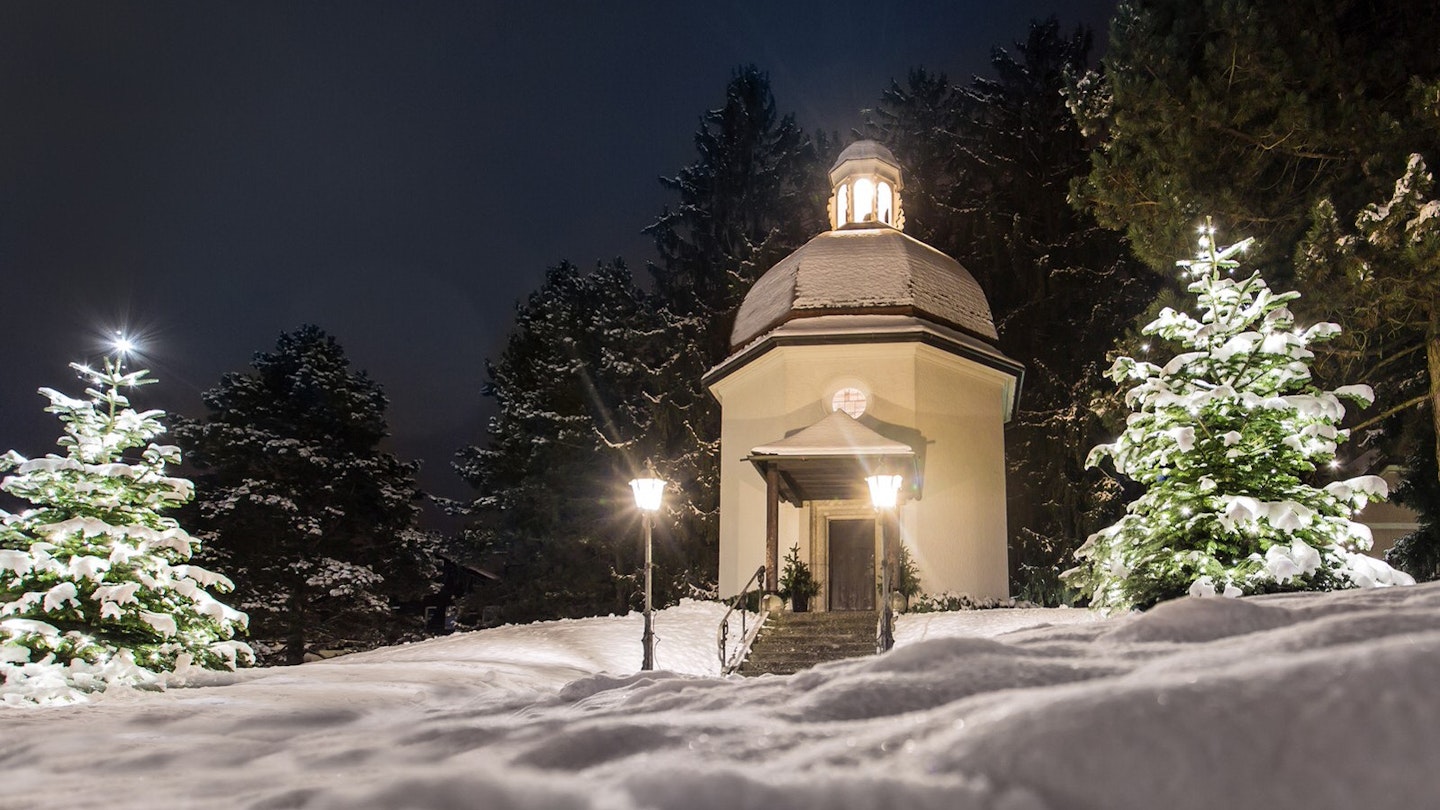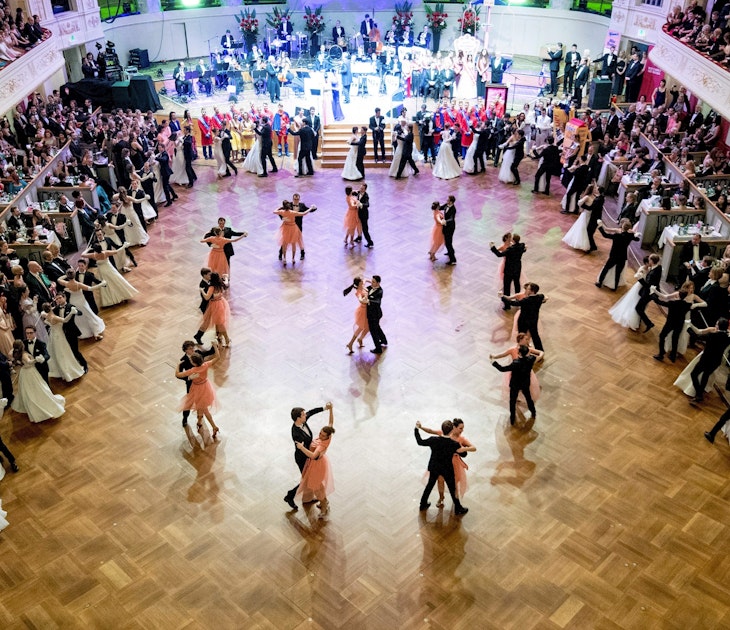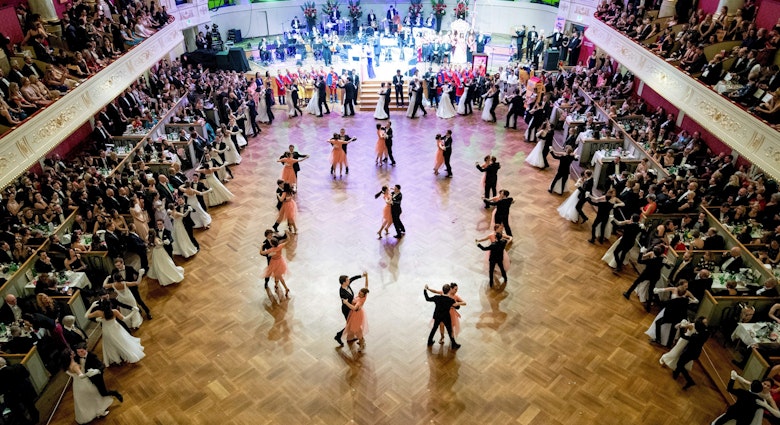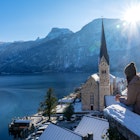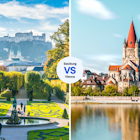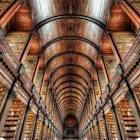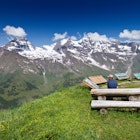The story of 'Silent Night' isn’t all church bells and choirs. More than 200 years since it was first performed in Austria, we follow its snow prints through the country to discover how this simple lullaby of hope became the world's biggest Christmas carol.
On 24 December 1818, hours before Christmas Mass in Oberndorf bei Salzburg, the assistant priest of the local church, Joseph Mohr, passed a six-stanza poem over to the parish organist, Franz Gruber, and asked him to compose a melody to accompany it.
The pair then stood in front of the nativity scene and sang 'Stille Nacht' for the first time, unaware that the peaceful song would still be reverberating around the world two centuries later. But with 30 million copies sold in over 300 different languages, 'Silent Night' has become the planet's definitive Christmas carol. From the divine inspiration to modern interpretation, here’s where to unwrap 'Silent Night' in Austria.
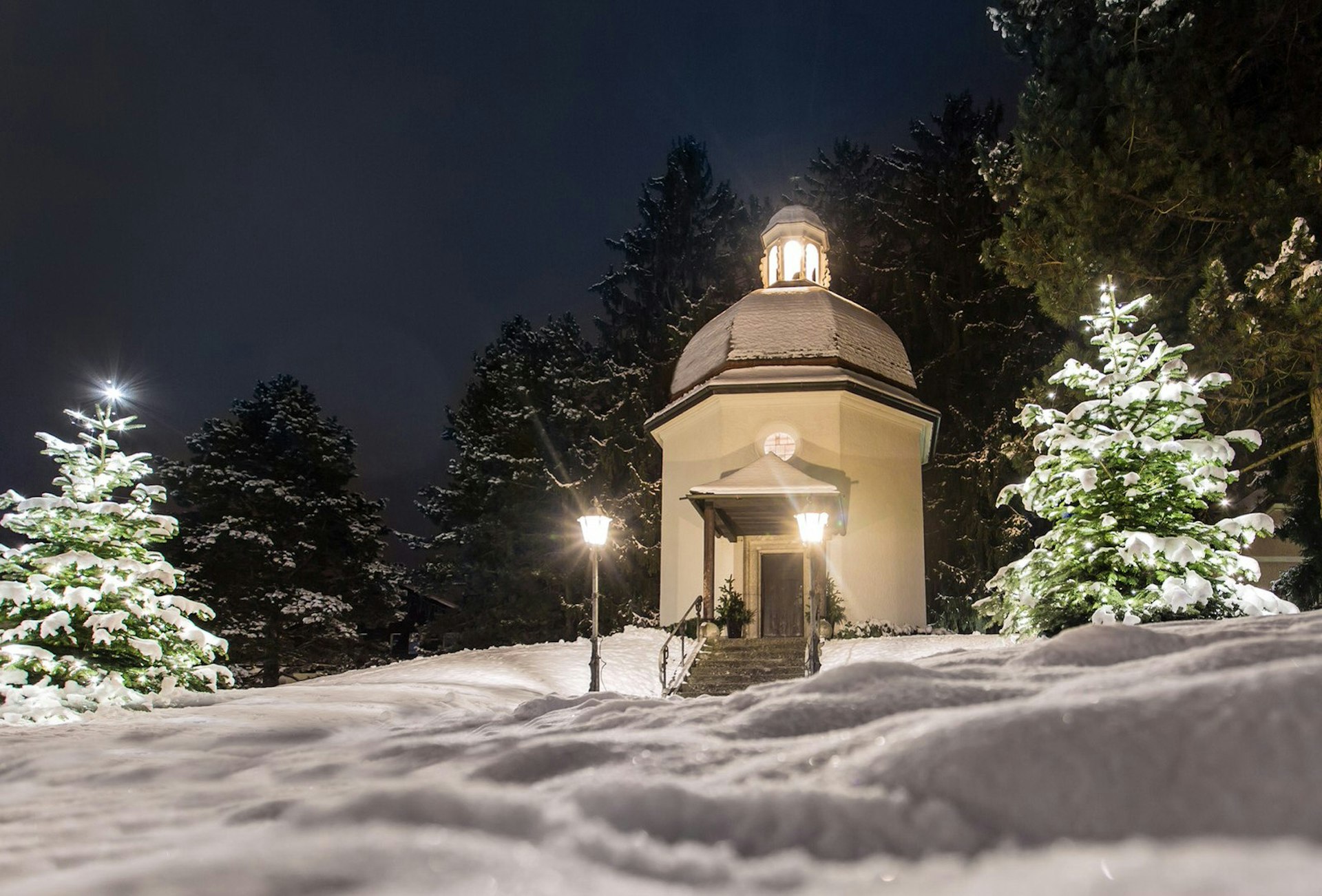
Discover the divine inspiration in Mariapfarr
With glimmering crystalline lakes and a crown of colossal snow-capped mountains, you would expect to see legions of landscape artists setting up their easels among the dandelion-dotted meadows of Mariapfarr. However, it’s a portrait that gets the most attention here.
Inside the Church of Our Beloved Woman, a painting depicting the Three Wise Men visiting a wavy-haired Jesus Christ is thought to be the inspiration behind the 'Silent Night' line ‘Holy infant, so tender and mild’. Initially penned as a poem by Joseph Mohr when the young assistant priest was stationed at the village, the original line reads as 'Holder Knab im lockigen Haar’ ('The lovely boy with curly hair').
Find the man behind the music in Hochburg-Ach
With thickets of black forest, swathes of softly pitching farmland and sunsets that linger low on the horizon, it feels as if the clock just stopped ticking in Upper Austria. Franz Gruber, the composer behind the 'Silent Night' melody, was born here in Hochburg-Ach in 1787.
Although his original family home was demolished in 1927, a similar wooden farmhouse – designed by the same architect – has been brought in from a nearby village and rebuilt in its place. Now a museum, the Grubahäusl gives a sense of the hardship of the time: simple carved furniture; shirts warming in the stube (the heated part of a traditional farmhouse); and thin strips of wood pinned into the wall which Gruber used to play in place of real piano keys.
More interesting still is the 2km-long Peace Path that begins at the Grubahäusl and signifies 'Silent Night' spreading across the globe. The circular walking tour takes in five contemporary sculptures created by the Tyrolean artist Hubert J Flörl, each representing a different continent where the carol has made an impact.
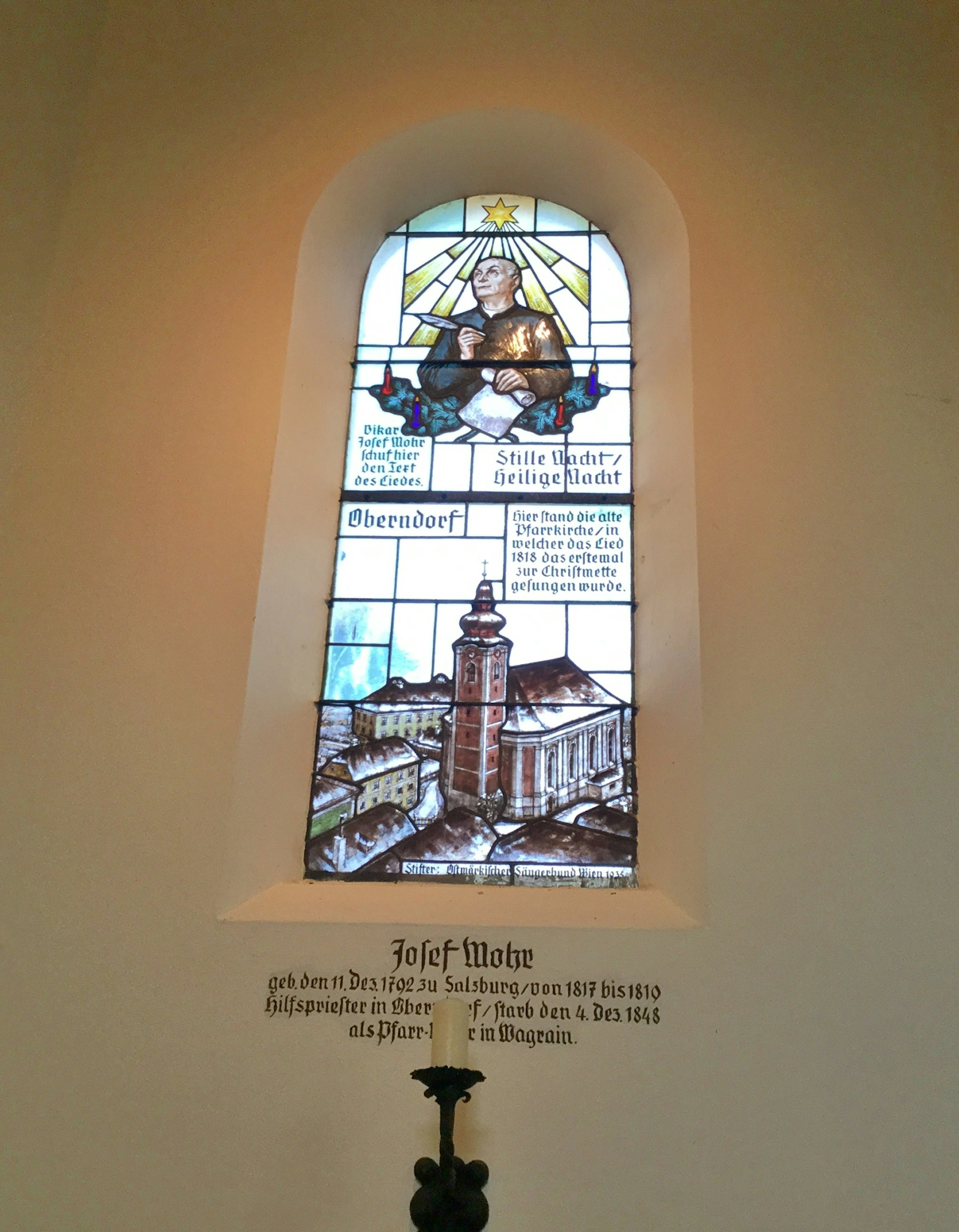
Relive the first-ever performance in Oberdorf
Sliced from Germany by the fumbling rush of the Slazch River, adorable Oberndorf bei Salzburg is the type of town that long-forgotten aunties visit just to pinch it by its chubby cherub cheeks. It’s a quiet, out-of-the-way kind of place: snow-washed Bavarian abodes squat next to an advent market that stirs a little life into the cobbled square.
All is calm here, all is bright, and in the centre of town, the first fresh snow of the season covers the hill upon which the Silent Night Chapel sits, elevating the small memorial church to such an extent that its nave appears to have been buried below.
Erected in 1915, the octagonal chapel stands on the site of the former St Nikolas Church where 'Stille Nacht' was performed for the first time. There’s room for little more than 30 people on the pews, but there’s space in its two stained-glass windows for Joseph Mohr and Franz Gruiber. 'Stille Nacht' is still sung here each year, at 5pm on 24 December.
Chart the carol’s global fame in Fügen
Of all the great excesses Fügen has to offer – the pillows of powdered snow; the stalls selling sharp, homemade schnapps; the resplendent five-star spa treatments – there is one glut of immoderate indulgence that will commit you to the madhouse quicker than any other: wading through the world's largest amassed collection of 'Silent Night' recordings at the Museum in der Widumspfiste.
Translated into more than 300 languages, this pleasant municipal museum allows visitors to listen to a wide variety of versions of the song, including recordings by crooners like Bing Crosby, stars such as Mahalia Jackson and renditions from Japan and Hawaii.
The Zillertal Valley village, 45km east of Innsbruck, was also pivotal in the success of 'Silent Night'. After hearing the carol in Oberdorf, local organ builder Carl Mauracher took the sheet music back to Fügen and passed it onto travelling groups like the Rainer Family. They then performed it to royalty, earning them invitations to the US, Russia, England and beyond.
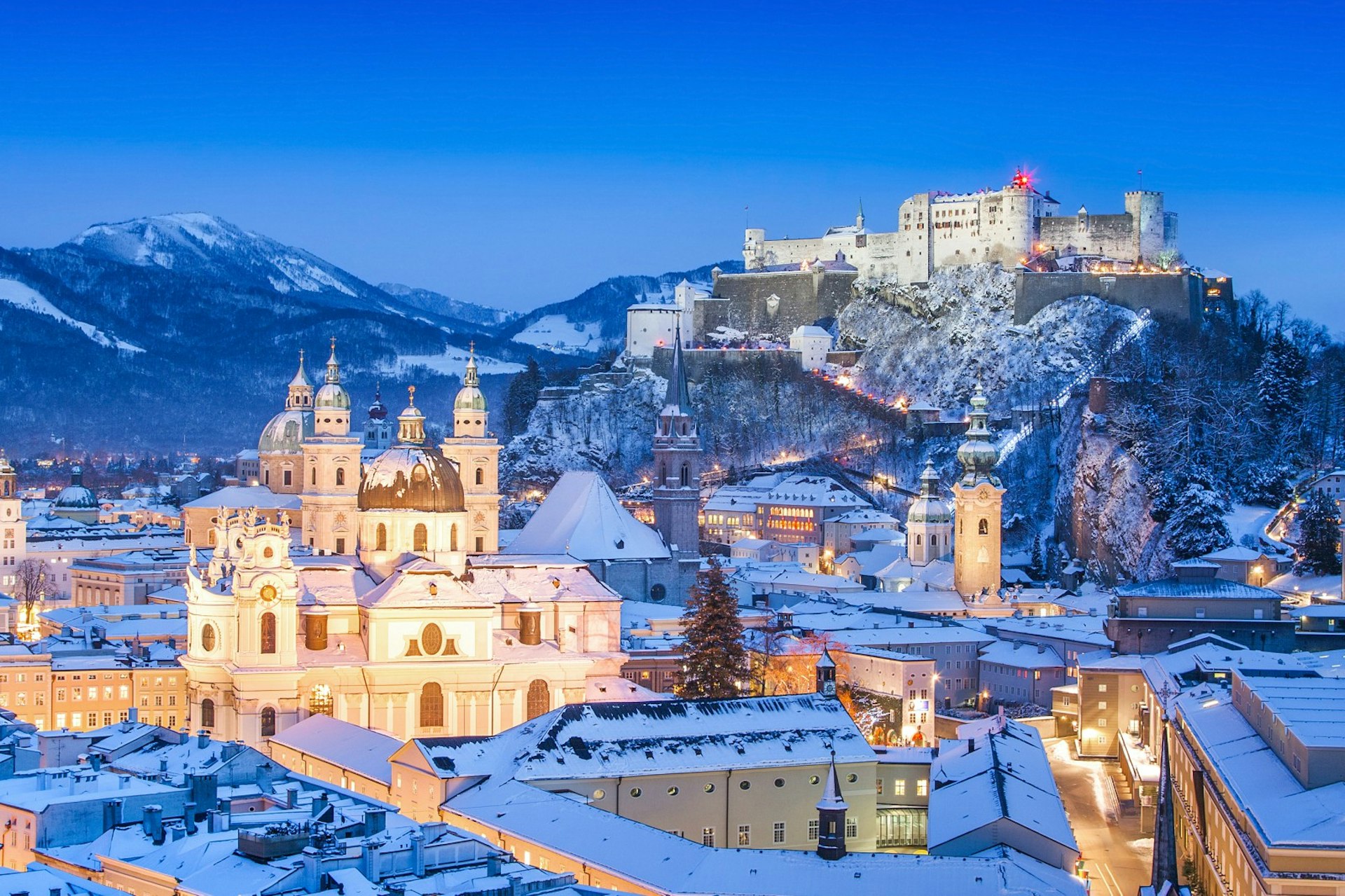
Sing your lungs out at Salzburg Cathedral
Accentuated by some of the finest architectural achievements of both man and Mother Nature, Salzburg stands out as one of Europe's most seductive fairy-tale cities. It waltzes between bombastic baroque domes, striking cliff-top fortresses, cobbled arcades and the ripped peak of its surrounding spur.
Without doubt, this is Mozart's city – no matter how hard the Sound of Music skips and yodels – but for 'Silent Night' lovers, it offers a glimpse of the enchanted too. The original yellowed manuscript of 'Stille Nacht' is quite literally hidden away in the Salzburg Museum — visitors have to unpeel a protective cover to reveal it.
For the definitive taste of 'Silent Night' though, catch the Salzburg Cathedral Choir performing the hymn on 24 December to the flickering glow of candlelight and the celestial climbing strings of the orchestra.
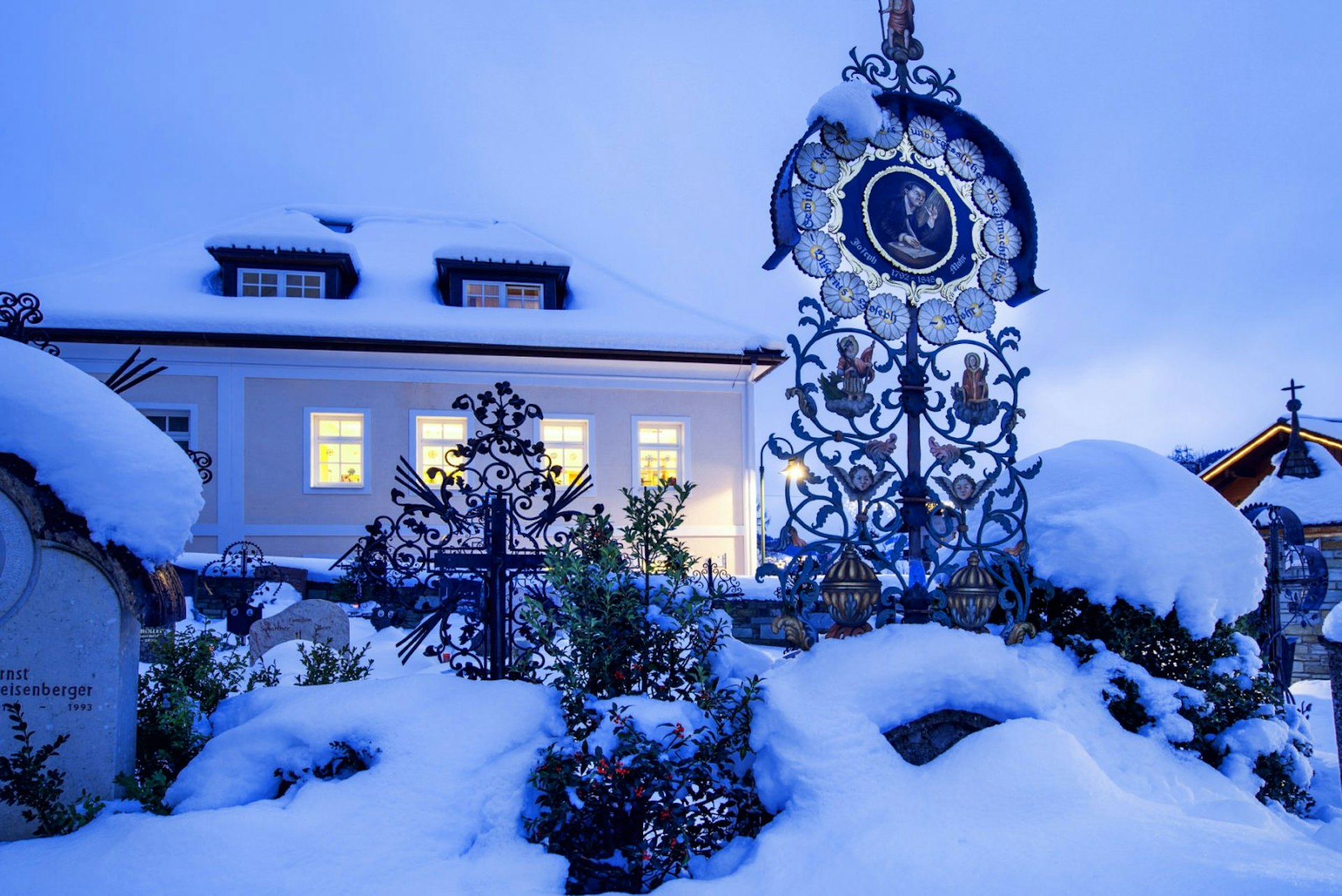
Ponder modern interpretations in Wagrain
Once the snow starts to settle, the town of Wagrain, 80km due south of Salzburg, is pure postcard panoramas as far as the ski goggles can see: alpine chalets, horse-drawn sleighs, glistening slopes that dive down through the treeline.
Most visitors will be too busy skiing to take in a gallery, but the new Silent Night Museum, which opened in 2017, is well worth the detour. Wagrain was Mohr’s last parish and he is buried in the local church, but rather than just looking back at his life, the museum accesses the impact of 'Silent Night'.
Visitors can hear versions of the carol from around the world and digest its many translations. Its most interesting exhibit, however, is the modern interpretations of 'Silent Night' composed by students from the Mozarteum University Salzburg.
Daniel travelled to Austria with support from the Austrian National Tourist Office (www.austria.info). Lonely Planet contributors do not accept freebies in exchange for positive coverage.
This article was first published in December 2017, last updated November 2019.

